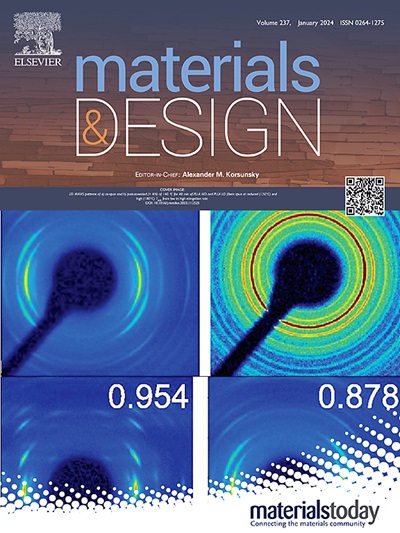Design of an ultra-wideband flexible optically transparent metamaterial absorber with wide-angle and polarization stability
IF 7.6
2区 材料科学
Q1 MATERIALS SCIENCE, MULTIDISCIPLINARY
引用次数: 0
Abstract
In this paper, an ultra-wideband, flexible, and optically transparent metamaterial absorber (MA) is proposed. The MA is devised from an Indium Tin Oxide (ITO) resistive film on a flexible transparent polyethylene terephthalate (PET) substrate, which ensures reliable performance on curved surfaces. Remarkably, The MA features stable absorption across a frequency range of 3.93 GHz to 27.45 GHz, achieving an absorption bandwidth of 149.9 % that encompasses the entire C-, X-, Ku-, and K-bands. Moreover, the proposed MA exhibits polarization insensitivity and stability under incidence angles up to 60°, achieving a 10 dB reduction in radar cross section (RCS) for both planar and curved configurations. Equivalent circuit model theory and impedance matching theory, as well as further discussion of current and field distributions, are undertaken to elucidate the underlying physical mechanisms. Subsequently, a prototype is fabricated and experimentally tested, with the measured results closely aligning with simulation results, thereby confirming the absorber’s robust absorption capabilities and applicability in microwave stealth applications.

求助全文
约1分钟内获得全文
求助全文
来源期刊

Materials & Design
Engineering-Mechanical Engineering
CiteScore
14.30
自引率
7.10%
发文量
1028
审稿时长
85 days
期刊介绍:
Materials and Design is a multi-disciplinary journal that publishes original research reports, review articles, and express communications. The journal focuses on studying the structure and properties of inorganic and organic materials, advancements in synthesis, processing, characterization, and testing, the design of materials and engineering systems, and their applications in technology. It aims to bring together various aspects of materials science, engineering, physics, and chemistry.
The journal explores themes ranging from materials to design and aims to reveal the connections between natural and artificial materials, as well as experiment and modeling. Manuscripts submitted to Materials and Design should contain elements of discovery and surprise, as they often contribute new insights into the architecture and function of matter.
 求助内容:
求助内容: 应助结果提醒方式:
应助结果提醒方式:


